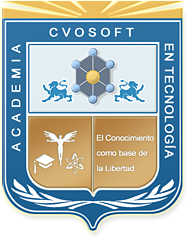
✒️La historia de las interfaces de usuario en SAP
La historia de las interfaces de usuario en SAP

The Evolution of User Interfaces in SAP
Initially, when SAP launched its SAP ERP software, the SAP GUI was the primary user interface tool.
The SAP GUI was designed for desktop PCs. However, in today's world, where applications should be accessible across various devices, including smartphones with much greater capabilities than when SAP ERP was released, it's crucial to have a mobile version of our application.
The SAP GUI is becoming outdated as it can't compete with the interface design of modern applications built with HTML5.
The introduction of SAP Fiori addressed this issue. It aims for a unified user design across all SAP applications, based on the UI5 framework. It's accessible through different platforms, be it web or native mobile applications on iOS and Android.
The Benefits of Using SAP Fiori
- The solution to the outdated SAP GUI design was Fiori. It pursues a unified user design across all SAP applications, based on the UI5 framework. It's accessible through various platforms, including web and native mobile applications on iOS and Android.
- The SAP GUI encompasses 300,000 screens and numerous functionalities. Initially, SAP selected the most frequently used applications and decided to revamp those scenarios. They also opted to refresh the programs and provide tools for clients to customize their screens.
Introducing SAP Screen Personas
SAP Screen Personas is a significant solution for transforming existing transactions or even customized programs into Fiori UX.
It allows companies to enhance user productivity by customizing their SAP GUI Dynpro and Web Dynpro ABAP screens. With more intuitive SAP screens, organizations can enhance user satisfaction, minimize training time, and reduce expenses on screen modifications, all without coding.
SAP Screen Personas is a low-code development platform enabling users to create applications primarily through graphical interactions and configuration. It allows a broader range of participants in the application development process, speeding up application creation and helping organizations meet business needs more quickly.
- Simplify Decision Making
- Increases SAP usage as a record system for real-time information-driven decisions.
- Accelerates adoption through more intuitive user interaction.
- Simplifies SAP usage by eliminating the need to memorize transaction codes.
- Streamline Business Processes
- Optimizes business processes within fewer screens.
- Consolidates multiple transactions, screens, or tabs into a single screen.
- Automates repetitive actions or navigation with a single keystroke.
- Simplify SAP Usage
- Standardizes a consistent user experience/theme for all SAP transactions.
- Reduces training requirements through intuitive interfaces and navigation.
- Embeds training content on screens, including video tutorials, notes, and transition help.
Understanding the Relationship between SAP Screen Personas, SAPUI5, S/4HANA, and SAP Fiori
- SAP Fiori is not a programming language but a set of design rules based on HTML5, CSS, and JavaScript technology, becoming the paradigm for user experience in SAP.
- SAP Screen Personas is not directly related to Fiori; it's a visualization layer placed on top of dynpros to simplify and/or enhance usability.
- SAP S/4HANA features transactions that call a Fiori application and others that may resemble Fiori, although they utilize Screen Personas behind the scenes.
The Relationship Between SAP Screen Personas, SAPUI5, S/4HANA, and SAP Fiori
SAP Fiori isn't a programming language; it's a set of design rules based on HTML5, CSS, and JavaScript technology. It has become the benchmark for user experience in SAP. SAP Screen Personas, on the other hand, is a visualization layer placed above dynpros to simplify or enhance usability. While SAP S/4HANA has transactions that call a Fiori application and others that may appear Fiori-like but are powered by Screen Personas.
Thanks to SAP GUI for HTML, which allows accessing SAP through a web browser, we can relate SAP Screen Personas and Fiori using the same screens and menu. The menu content remains the same, and transactions can be accessed through the bar marked in red by entering their names.
The difference lies in dynamically emulating SAP transaction screens in a web browser by automatically assigning SAP screen elements to HTML through the Internet Transaction Server (ITS) on the backend. Each user can access a personalized menu and navigate to various masked transactions (variants of the original). SAP Fiori also allows creating tiles pointing not only to SAPUI5 applications but also to transactions via SAP GUI for HTML and URLs. Previously, Fiori was the go-to for mobile devices due to its adaptability, but since SAP Screen Personas 3.0 SP06 with Slipstream Engine, Screen Personas gained that capability.
Slipstream Engine
It's a UI5 application that runs in the browser or mobile device, capable of reading/interpreting Screen Personas flavors to display them on the device, adapting the visualization accordingly.
Here are some available tools for changing, adapting, or developing new applications:
- Floorplan Manager (FPM): used for adoption or application creation. It's a highly configurable UI framework for developing and customizing web-based applications efficiently.
- SAP Screen Personas: acts as a layer on the screen where fields can be hidden, top parts merged, fields combined, but no business functions can be added; this works solely at the user interface level.
- SAPUI5: entails a clear separation between the user interface and business logic, offering flexibility for future changes. The fundamental architectural shift is SAP's decoupling of the user interface and business logic, making it easier for developers to respond to UI technology changes.
The Relationship Between SAP Enterprise Portal (EP) and SAP Fiori
What is a Portal?
A portal serves as a central access channel for services, information, and applications accessible to a broad audience. It's a dynamic site where documents or web content can be published.
SAP Portal provides a single access point to information sources, business applications, information repositories, databases, and SAP and non-SAP services, within and outside the organization. Accessible from desktop computers and mobile devices like smartphones or tablets, it's ideal for organizations with many users needing access to various applications and services across different system environments, especially in JAVA and ABAP-based environments.
From a technological standpoint, SAP Fiori Launchpad can be used as a template both in SAP Enterprise Portal and SAP Cloud Platform Portal. To utilize Fiori Launchpad in SAP Enterprise Portal, we need a version of SAP NetWeaver from NetWeaver 7.4 SPS10 (or 7.31 SPS15) onwards. With this version, we gain access to the necessary elements to "simulate" our SAP Fiori.
One such element is a new Framework that simulates the display of a regular SAP Fiori. By using this framework, we transition from the traditional SAP Portal view to a tile-based portal.
The SAP Fiori launchpad platform is based on modern web technologies and can be consumed through the web browser or SAP Business Client. It's available on major platforms:
- SAP NetWeaver AS ABAP (SAP Fiori front-end server)
- SAP Cloud Platform (SAP CP)
- SAP Enterprise Portal (EP)
SAP Fiori experience offers users intuitive and easy access to portal content and services from both desktop and mobile devices.Integration of SAP Fiori applications into the standard portal is possible via SAP Fiori iView, or by activating SAP Fiori Launchpad as the new user experience framework.
This has been available since SAP Enterprise Portal version 7.4 SP8 and 7.31 SP13.
SAP Portal offers various ways to leverage Fiori, from integrating Fiori applications into the existing Portal to a complete Portal renovation using the Fiori framework.
Applications running on the client side can be distinguished as follows: Fiori launchpad, standalone Fiori app, or any other portal application.
SAP's focus is currently on the SAP Cloud Platform, currently called SAP BTP.
SAP Enterprise Portal (EP) and SAP BTP are two distinct products with similar features but notable differences.
When considering an upgrade of SAP Portal to version NW 7.5, migration to the Cloud should be considered, as all innovations are happening in this product. SAP Portal will continue to receive only corrective support for as long as the product is valid, which is currently expected until 2024, though it may extend to 2027/30.
In planning a migration from SAP Portal to SAP HANA CLOUD PLATFORM, the following aspects should be considered:
- Web Dynpro Java views: not supported on SAP Cloud Platform. However, SAP Enterprise Portal 750 can be used as a container for this type of content while transitioning to another technology.
- KM (Knowledge Management): can be replaced with the "Document Center" cloud solution.
- Universal Worklist (UWL): a centralized tool for aggregating alerts, notifications, approvals, and ad-hoc tasks for work items.
When does SAP Enterprise Portal maintenance end?
The Java application server within SAP NetWeaver 7.30, 7.31, and 7.40 will enter general maintenance until the end of 2020, with no extended maintenance offered. SAP NetWeaver 7.50 will be supported until the end of 2024.
Theme Designer
The new functionality introduced in SAP Portal since version 7.30 is the Theme Designer.
This new tool emerges, especially with the advent of SAP Fiori, as SAP aims to advance interface and user experience work. The Theme Designer is based on the WYSIWYG concept, where what you see is what you get and is browser-based. The built-in preview page not only allows instant viewing of design changes but can also emulate different screen sizes and orientations on the fly. The tool can be used for quick and simple design changes to complete implementation of a corporate design. It's compatible with all SAP web-based applications and clients and is available via:
- SAP NetWeaver ABAP Application Server: accessed through transaction /UI5/THEME_DESIGNER or UI5/THEME_TOOL.
- SAP Enterprise Portal: within the Content Administration menu → Portal Display → Portal Themes → User Interface Theme Designer.
- SAP cloud platform: themedesigner-themedesigner.dispatcher.hanatrial.ondemand.com
Sobre el autor
Publicación académica de Jaime Eduardo Gomez Arango, en su ámbito de estudios para la Carrera Consultor en SAP Fiori.
Jaime Eduardo Gomez Arango
Profesión: Ingeniero de Sistemas y Computación - España - Legajo: SW34C
✒️Autor de: 149 Publicaciones Académicas
🎓Cursando Actualmente: Consultor en SAP Fiori
🎓Egresado de los módulos:
 Disponibilidad Laboral: FullTime
Disponibilidad Laboral: FullTime
Presentación:
Ingeniero de sistemas y computación con 8 años de experiencia el desarrollo frontend & backend (react/node) y en cloud (aws), actualmente desarrollando habilidades en sap btp, ui5, abap y fiori.
Certificación Académica de Jaime Gomez
















